Chrysanthemum is a fairly famous plant of our gardens. There are many species and colors. Without a doubt, the long-term Korean chrysanthemum is the Queen of the Autumn Garden. Unlike Indian, Korean chrysanthrom can be left for the winter in the open soil. In the southern regions it can not be covered at all. In the cold - will need minor shelter efforts.
Basic bloom begins from September, but some varieties bloom in July-August. The height of the bush varies from 20 cm to the meter and above. The magnitude of the flower is from 2 to 9 cm. A variety of flower-shaped shape: non-none, semi-world, terry, pomponny and anemoneovoids. Petals can be thin (needle), wide and closed in the tube. Those. Fantasy at the breeders of Chrysanthemum Korean has no boundaries.
The cultivation of Korean chrysanthemums is a simple occupation, even the beginners of gardening.
Chrysanthemum Korean. Varieties, species
Chrysanthemum Korean are divided into groups.
- Burgundy (low). Up to 30 cm in height. They differ compactness, they give little frightened, bloom early.
- The average, height from 30 to 50 cm. Deplexed bushes.
- Tall, tall up to meter. Basically - upright bushes with later flowering.
- A separate group is chrysanthemum multiflora. They are specifically derived for lovers of beautiful smooth balls from flowering chrysanthemums. Different with small terry blossoms and early blooms (August-September). In the plant genetically laid the possibility of branching. Just one sprout without pinching is formed into a lush ball.
Korean chrysanthemum. Landing
- It is necessary to plant a Korean chrysanthide on an open, sunny, protected from the wind place in late May-early June.
- Soil is preferably a neutral reaction or a weakness. It should be soft, breathable and fertile.
- Plant chrysanthemums in cloudy weather or at the end of the day when the sun is less actively. Depending on the type and variety, the distance between the bushes can be from 30 to 50 cm. Multifors are planted at a distance of 60 cm.
Actually, landing:
- making wells or a trench of a depth of 35-40 cm,
- make fine crushed stone, sand for drainage,
- fertilize overwhelming dung or biohumus,
- savy chrysanthma, not too blunting. She has a surface height of the roots,
- we make the fiction of the upper escape for branching (for multiflora this procedure is not carried out),
- the soil under the bush can be covered with agrofiber, sprinkle with pine bark go or decorative chips.
Korean chrysanthemums. Care
- In the southern regions of Russia, Chrysanthemum Chinese winters without shelter. At the same time, do not remove the stalks for the winter. They protect the root from the extinction, delay snow. If this spoils the type of your lawn, you can cut up the top of the stems, leaving the hemp to 15 cm. In the middle lane and the northern regions, a light ventilated shelter from the pavement, peat, underfloor materials is made. You can pen in the leaves. With melting of snow, the shelter is removed, otherwise the plant can smear.
- In the spring, cut the dry parts of the branch and normalize the young piglery. The condition for the annual successful formation of multiflora bushes is the division of bushes or removal of superfluous crops in spring.
- Chrysanthemum Chinese bushes can be crushed for the winter. With the autumn transplant of the blooming multiflora in the container, it is cut after flowering. Early spring share bushes or pile and planted at a permanent place.
- Once a week, chrysanthemia must be picked up with complex mineral and organic fertilizers. In the period of active growth, chrysanthemum speaks well to Korovyan (1:10) and overwhelmed manure. Before the formation of buds in fertilizers must prevail potassium and magnesium. Shortly before flowering, the feeding stops. It is important not to overdose fertilizers.
- Chrysntem must be abundantly watering under the bush, trying not to fall on the leaflets.
- Every 3 years it is necessary to transplant chrysanthma to a new place, otherwise the bush becomes painful, the flowers are minced. Usually such a procedure is accompanied by the division of the bush.
Korean chrysanthemum pests and diseases
Chrysanthemums are subject to fungal diseases. Recommended during periods of tightening raw weather Preventive processing of fungicides with copper content.
The main pests are the wave and slugs damaging the leaves, as well as nematodes, harvesting the roots of chrysanthemums. TRU process insecticides. During the flowering period, it is better to use biological products such as actors. To combat slugs, metaldehyde or zlocide granules are used. To combat nematodes, we use the Decaris preparation, or the roots dip 15 minutes in warm water 40-48 degrees.
The reproduction of Korean chrysanthemums
To multiply Chrysanthemums can be divided by bush, cuttings and seeds.
Sharing the bushes chrysanthemums is better in spring, in April-early May, when a young pigle is already visible. It is preferable to dissolve bushes in non-jar of cloudy weather.
So, consider in more detail ways:
Delivery bush with digging. When multiplying, the shoots and root visible are clearly visible:
- dig a bush
- we divide the secateur / knife to the part, in each of which there will be 1-3 cuttings and roots,
- squeeze parts of the bush to the depth of the uterine bush or in the container,
- in the first 2 weeks we regularly water.
Delivery bush without digging. At the same time, the uterine bush remains in place. Cut a knife with a slicing of a root with formed shoots and sit down on a permanent place or in the container.
Shining. The way you can get the largest number of bushes in one season:
- in the fall, we transplant the bush of Korean chrysanthemum into the container and enter the room,
- From the autumn we admire long blossom of chrysanthemum,
- In winter, we cut the upper dried pieces of the stems,
- early spring prepare lightweight nutrient soil,
- production cuttings 5-7 cm from root shoots or side shoots on stems,
- we break down the lower sheets and macaus cuts of cuttings in Korninn,
- land in containers / cups and cover with top polyethylene film, glass or plastic transparent cups,
- after 2 months, the cuttings are successfully rooted and ready for disembarking at a permanent place.
Korean chrysanthemums from seeds
Korean (perennial) chrysanthemums are grown from seed seedlings. For this:
- we take ready-made soil. You can prepare a loose soil based on peat with the addition of humus and rolling it in the oven,
- at the bottom of the seaside boxes, we smell drainage from crumbs, sand or brushing bricks,
- we smear soil, grow up,
- sowing seeds, adding them to the ground, but not sprinkling the earth from above,
- spray water from the spray gun,
- cover with glass / film and put in a warm place (20-25 degrees),
- moisturize the soil with a spray with a spray and wait for the appearance of germs,
- when germinating seeds (for 10-14 days), drawers are transferred to a light place or set additional lighting. Gradually temper shoots, removing the film to complete shelter removal,
- pick plants with 2-4 real leaves in cups. Before transshipment of chrysanthemums, they are abundantly poured and trying to transplant with a lump of earth, so as not to damage the roots,
- after picking, chrysanthemums reduce temperatures up to 14-16 degrees, continuing to illuminate well or heated on cloudy days and in the evening,
- once every 2 weeks feed the seedlings with complex liquid fertilizers.

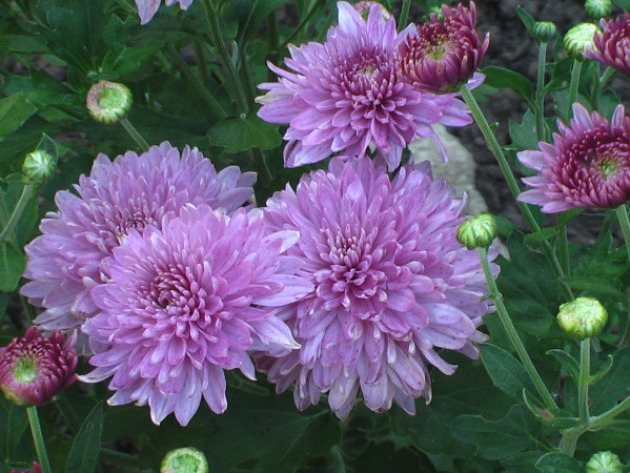
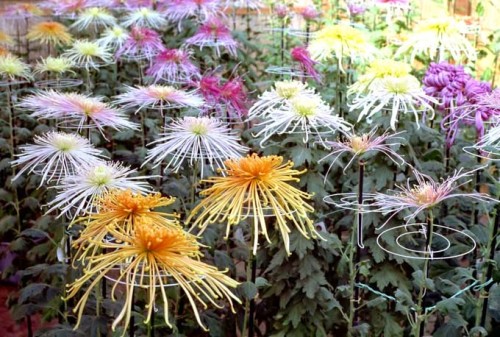
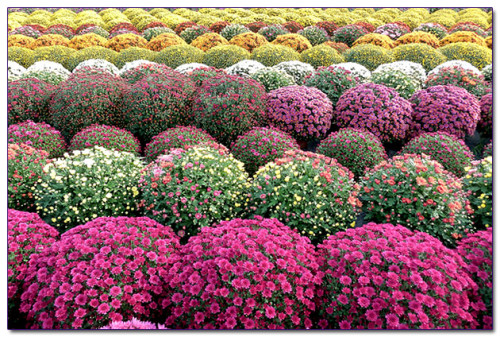
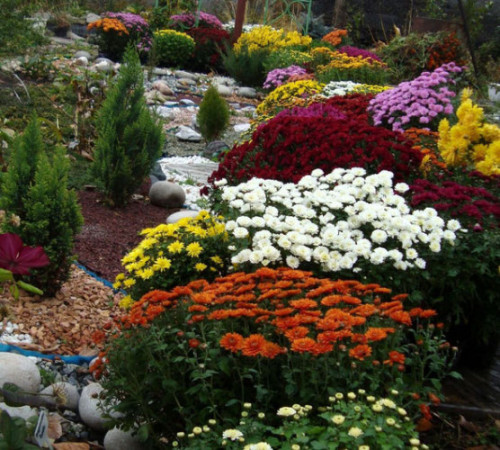

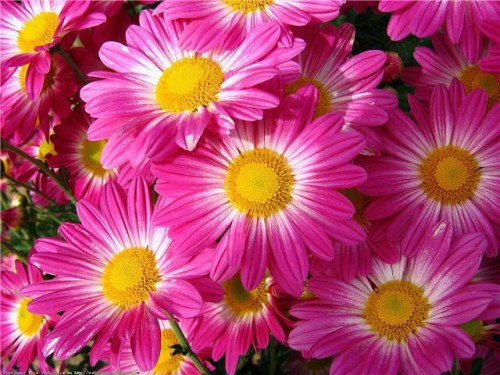












 Start a discussion ...
Start a discussion ...